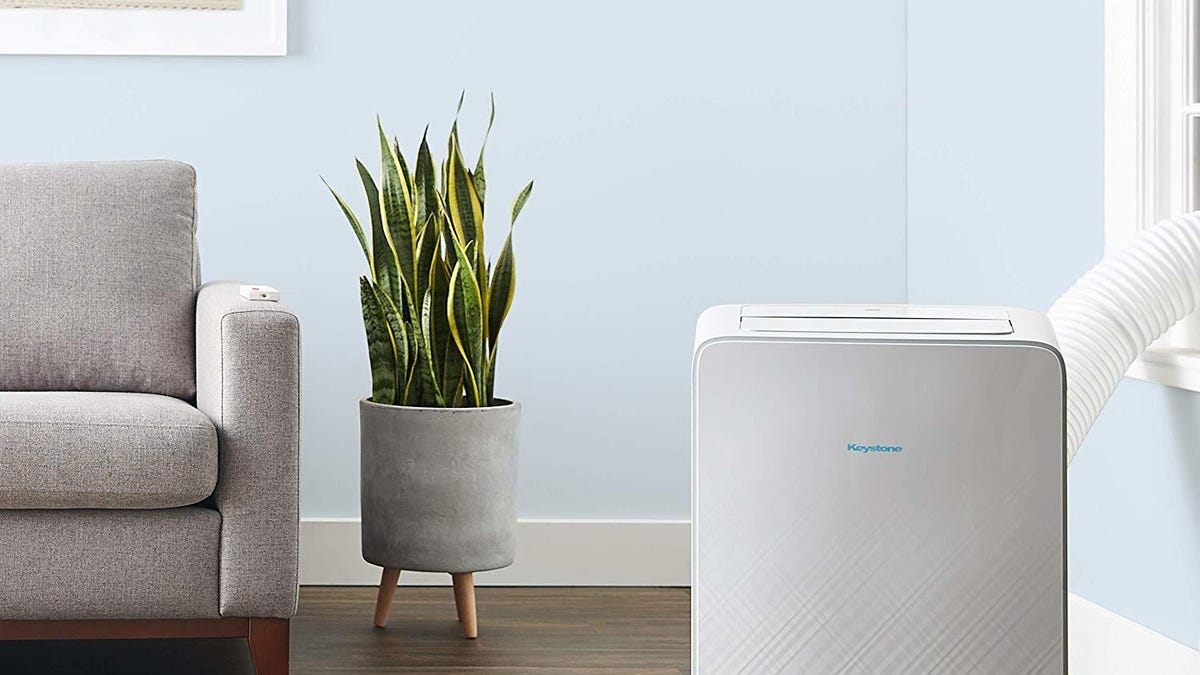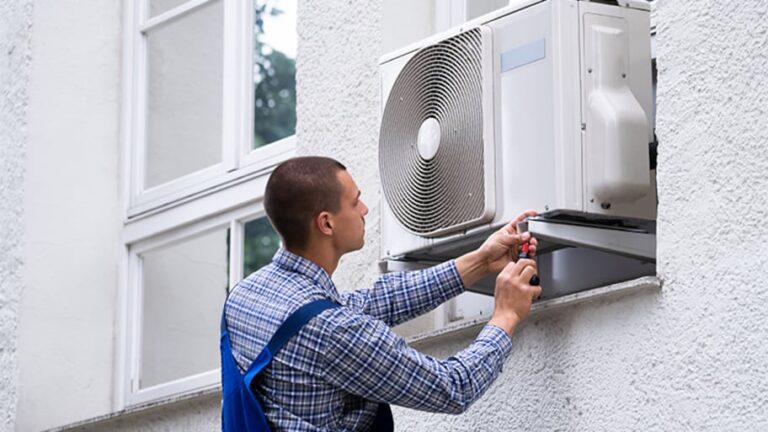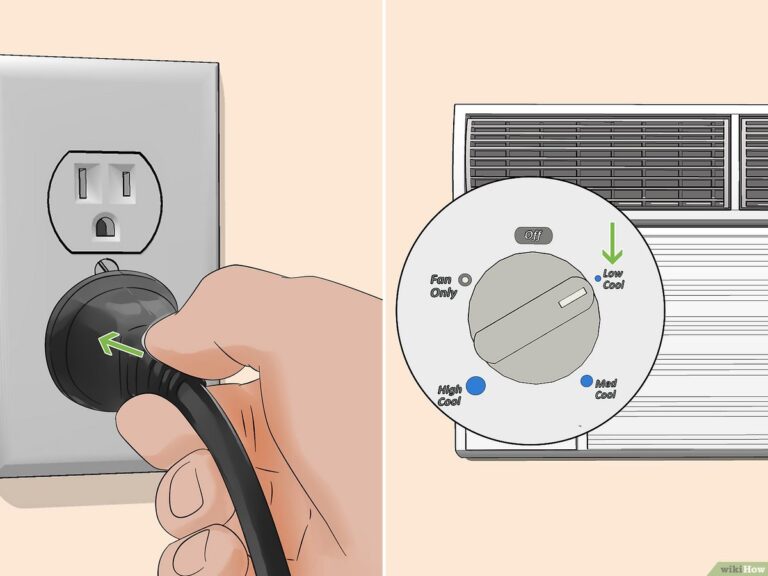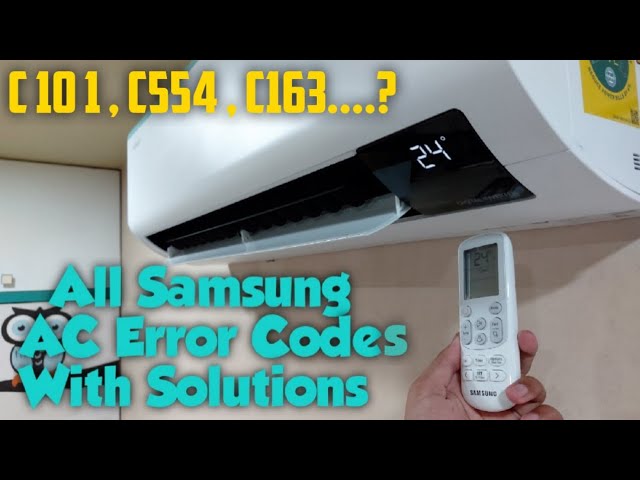How to Drain Insignia Portable Ac: Quick and Easy Methods
To drain an Insignia Portable AC, manually empty the holding tank periodically and use the separate drain plug or tube to empty the water into a bucket or drain. The unit is self-evaporative but will still accumulate some water.
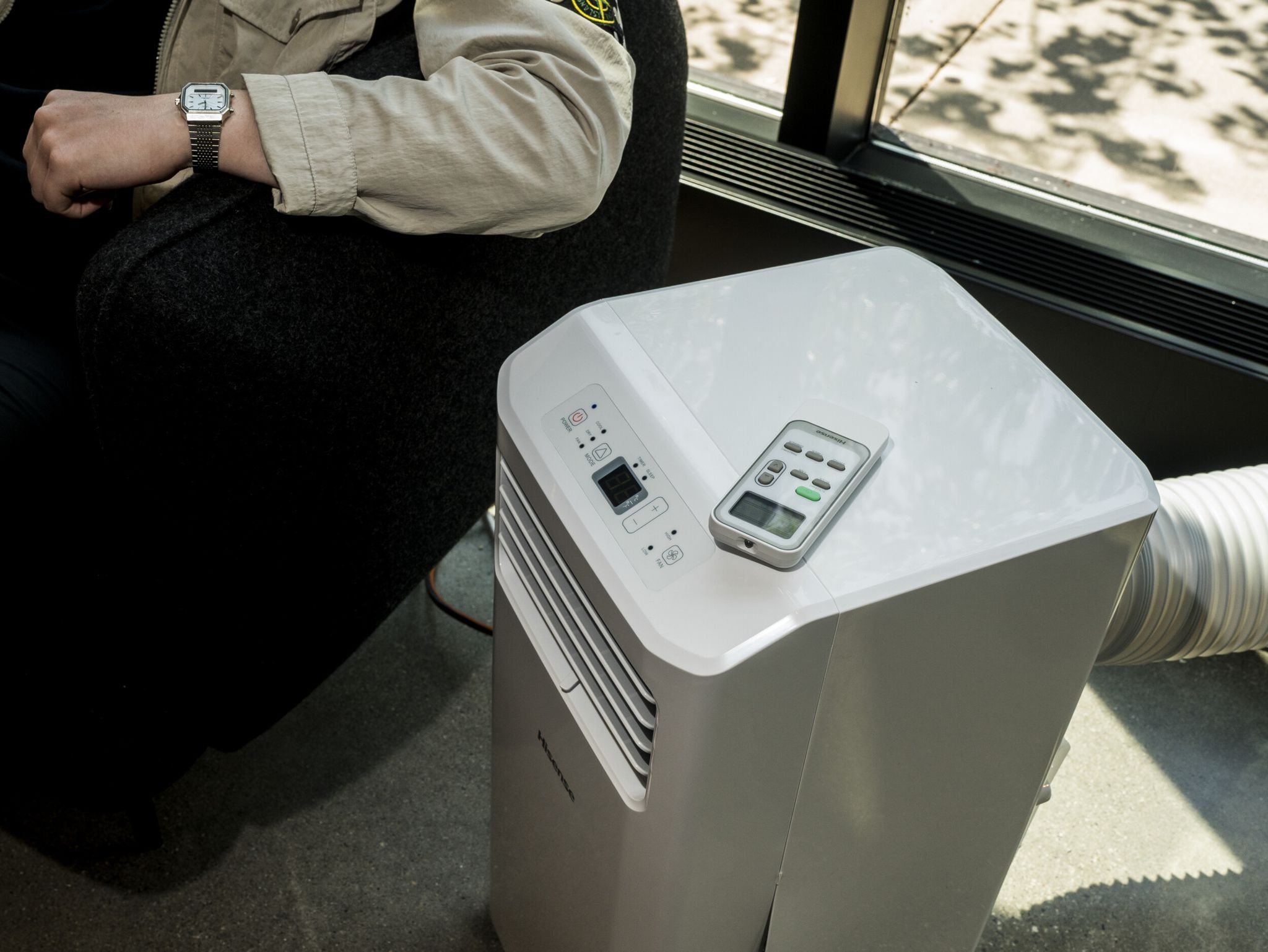
Credit: www.popularmechanics.com
Understanding The Need For Draining A Portable Ac
To understand the need for draining a portable AC, it’s important to know how to drain an Insignia portable AC. The unit is self-evaporative but still collects water in the holding tank, which needs to be manually emptied occasionally. It also has a separate drain plug and a tube to connect for emptying into a bucket or drain.
Why Draining Is Necessary:
- Portable AC units produce condensation during the cooling process, which leads to the accumulation of water.
- Draining the water is essential to prevent damage to the unit and maintain its efficiency.
- Neglecting to drain the portable AC can result in various issues, such as leakage, mold growth, and reduced cooling performance.
- Understanding the need for draining will help you take the necessary steps to ensure your portable AC functions optimally.
Accumulation Of Water In A Portable Ac:
- When a portable AC operates, it extracts moisture from the air, turning it into condensation.
- The collected water usually gets stored in an internal tank or reservoir.
- Over time, if the tank is not emptied, the water will continue to accumulate, potentially causing problems.
- It’s crucial to keep an eye on the water level and drain it when necessary to avoid any complications.
Consequences Of Not Draining:
- If the accumulated water in the portable AC is not drained, it can lead to leakage.
- Leakage can damage your flooring, furniture, or any other items in proximity to the AC unit.
- Additionally, the stagnant water can become a breeding ground for mold and bacteria, leading to potential health issues.
- Neglecting to drain the water may also cause your portable AC to work inefficiently, compromising its cooling performance.
Importance Of Regular Maintenance:
- Regular maintenance, including draining the portable AC, is vital to ensure its optimal functioning.
- By draining the water regularly, you prevent the possibility of leakage and subsequent damage.
- Regular maintenance also helps maintain clean air quality by avoiding the growth of mold and bacteria.
- Taking the time to drain your portable AC as part of your maintenance routine will extend the lifespan of the unit and keep it operating at its best.
Draining Options For Insignia Portable Ac
To drain your Insignia Portable AC, simply locate the separate drain plug and connect a tube to empty the water into a bucket or drain. Make sure to manually empty the holding tank regularly to prevent water accumulation. Additionally, check the drain line for any clogs and remove any debris to ensure proper drainage.
Fully Evaporative Draining Method
- This method of draining involves allowing the moisture collected by the Insignia Portable AC to evaporate on its own.
- The AC unit is designed to reprocess the condensed water internally, eliminating the need for manual draining.
- The evaporative draining method is a hassle-free option, as it does not require any additional equipment or intervention.
Exploring The Benefits Of Fully Evaporative Draining
- No need for manual intervention: With fully evaporative draining, you don’t have to worry about manually draining the accumulated water.
- Hassle-free maintenance: This method reduces maintenance requirements, making it convenient for users.
- Energy-efficient: The fully evaporative draining process allows the AC unit to utilize the condensed water for cooling purposes, resulting in increased energy efficiency.
Step-By-Step Guide On How To Perform Fully Evaporative Draining
- Place the Insignia Portable AC on a stable, level surface.
- Ensure that there are no obstructions or blockages around the unit.
- Switch on the AC and set it to the desired cooling mode.
- Allow the AC to run for a while, allowing the internal system to reprocess the condensed water through evaporation.
- Monitor the AC periodically to ensure that the water is being evaporated effectively.
- If you notice any issue or excessive water accumulation, refer to the user manual or contact customer support for assistance.
Precautions To Consider While Using This Method
- Ensure proper ventilation: Adequate airflow around the AC unit is essential for effective evaporative draining.
- Keep the unit clean: Regularly clean the air filters and vents to prevent any blockages or obstructions.
- Maintain optimal room temperature: Maintaining an average room temperature helps in efficient evaporation of the condensed water.
Partially Evaporative Draining Method
- The partially evaporative draining method involves a combination of manual draining and evaporation.
- This method is suitable when the AC unit is unable to reprocess all the condensed water internally.
Understanding When To Opt For Partially Evaporative Draining
- If you notice excessive water accumulation in the AC unit that is not being effectively evaporated, it may be time to consider partially evaporative draining.
- In situations where the humidity level is high or the AC unit is operating in a very humid environment, this method can be beneficial.
Step-By-Step Guide On How To Perform Partially Evaporative Draining
- Locate the drain port on the back or bottom of the AC unit.
- Prepare a drain pan or container that can hold the amount of water that needs to be drained.
- Position the drain pan under the drain port to catch the water.
- Carefully unscrew or remove the drain plug or cap to release the water.
- Allow the water to drain completely into the drain pan.
- Once the draining is complete, securely replace the drain plug or cap.
Advantages And Limitations Of This Method
- Advantages:
- Provides a solution for situations where the AC unit is unable to reprocess all the condensed water internally.
- Offers a manual draining option when required.
- Limitations:
- Requires manual intervention and monitoring.
- May be less energy-efficient compared to the fully evaporative draining method.
Using A Condensate Pump For Draining
- A condensate pump is an optional accessory that can be used to facilitate draining the condensed water from the Insignia Portable AC.
Exploring The Role Of A Condensate Pump In Draining
- The condensate pump acts as an intermediary between the AC unit and a drainage point, allowing for convenient and efficient removal of the condensed water.
- It pumps the water out through a hose, eliminating the need for manual draining or relying solely on evaporation.
Step-By-Step Instructions On Setting Up And Using A Condensate Pump
- Place the condensate pump on a stable, level surface near the AC unit.
- Connect the drain hose from the AC unit to the condensate pump’s inlet.
- Position the pump’s outlet hose to direct the drained water to a suitable drainage point.
- Ensure all connections are secure and properly fitted.
- Switch on the condensate pump and monitor for proper functioning.
- Regularly check the pump and hoses for any leaks or malfunctioning.
Benefits And Considerations Of Using A Condensate Pump
- Benefits:
- Provides a convenient and efficient method of draining the condensed water.
- Eliminates the need for manual intervention or monitoring.
- Considerations:
- Requires an additional investment in purchasing a condensate pump.
- Pump maintenance and periodic cleaning may be necessary for long-term functionality.
Draining Insignia Portable Ac Without A Hose
To drain the Insignia Portable AC without a hose, simply remove the drain plug and empty the holding tank manually. Alternatively, you can connect a tube to the drain plug and direct the water into a bucket or drain. Make sure to check and tighten any loose connections that may be causing the AC to not drain properly.
Exploring Alternative Methods For Draining Without A Hose:
- One of the challenges of draining Insignia Portable AC units without a hose is finding an effective alternative method. Fortunately, there is a solution that involves using an aluminum foil chute.
- This alternative method allows you to drain the water from your portable AC unit without the need for a hose, providing a convenient option for those without access to a floor drain or when a hose is not available.
Introducing Aluminum Foil Chute As A Solution:
- The aluminum foil chute is a clever and practical solution for draining your Insignia Portable AC unit without a hose. It is a simple DIY project that can be easily created using common household items.
- By utilizing the aluminum foil chute, you can effectively direct the condensate water from your portable AC unit into a container or bucket, preventing any potential mess or water damage.
Step-By-Step Guide On Creating And Using An Aluminum Foil Chute:
- Start by gathering the necessary materials: A roll of aluminum foil, a pair of scissors, and a container or bucket to collect the condensed water.
- Measure the distance between the bottom of your Insignia Portable AC unit and the container or bucket. This will determine the length of the aluminum foil chute.
- Cut a long strip of aluminum foil, ensuring it is long enough to reach from the bottom of your portable AC unit to the container or bucket.
- Fold the strip of aluminum foil lengthwise, creating a narrow trough-like shape.
- Attach one end of the aluminum foil chute to the drain port of your Insignia Portable AC unit, making sure it is securely fastened.
- Direct the other end of the aluminum foil chute into the container or bucket, ensuring that it is positioned in a way that allows the condensate water to flow smoothly.
- Place the container or bucket in a strategic location where the drained water can be collected without causing any inconvenience or damage.
- Monitor the container or bucket regularly and empty it when it becomes full to prevent overflow.
Tips For Ensuring Effective Draining Without A Hose:
- Position the aluminum foil chute in a downward slope to facilitate the smooth flow of water into the container or bucket.
- Consider using a larger container or bucket to minimize the need for frequent emptying.
- Regularly inspect the aluminum foil chute for any blockages or kinks that may impede the water flow and address them promptly.
- Place a towel or absorbent material underneath the container or bucket to catch any accidental spills or overflow.
- Remember to regularly clean and maintain your Insignia Portable AC unit to ensure optimal performance and prevent any clogs or issues with draining.
By following these simple steps and tips, you can effectively drain your Insignia Portable AC unit without a hose using an aluminum foil chute. This alternative method provides a practical solution for those who do not have access to a floor drain or prefer not to use a hose for drainage.
Enjoy the cooling comfort of your portable AC unit without the worry of water accumulation!
Tips For Efficient And Hassle-Free Draining Of Insignia Portable Ac
Learn how to efficiently and hassle-free drain your Insignia Portable AC with these helpful tips. From ensuring proper installation to unclogging the condensate drain line, you’ll be able to keep your AC running smoothly and prevent any water accumulation issues.
Maintenance And Cleaning Guidelines For Preventing Clogs:
- Regularly clean the air filters to ensure proper airflow and prevent clogs. Use a soft brush or vacuum cleaner to remove dust and debris from the filters.
- Check the condensate drain pan regularly and clean it if necessary. Accumulated dirt and debris in the drain pan can cause clogs and hinder proper draining.
- Inspect the drain line for any obstructions or blockages. Use a pipe cleaner or a similar tool to clear any debris that may be blocking the drain line.
- Keep the area around the AC unit clean and free from dust and debris. This will prevent dirt from entering the unit and clogging the drain system.
Common Mistakes To Avoid While Draining The Ac Unit:
- Avoid tilting the AC unit excessively during draining. This can cause water to spill and create a mess. Follow the manufacturer’s instructions for proper draining techniques.
- Never disconnect the drain hose while the unit is running. This can result in water leakage and damage to the unit. Always turn off the AC unit before disconnecting the drain hose.
- Don’t forget to check and empty the condensate drain pan regularly. If the pan overflows, it can cause water damage to your surroundings and potentially damage the AC unit.
Proper Storage And Maintenance After Draining:
- Once you have drained the AC unit, ensure that it is completely dry before storing it. Wipe down the unit with a clean cloth to remove any moisture.
- Store the AC unit in a cool, dry place to prevent the growth of mold and mildew. Make sure the unit is covered or placed in a protective bag to keep it free from dust and debris.
- If possible, remove and clean the air filters before storing the AC unit. This will ensure that the unit operates efficiently when you need it again.
Troubleshooting Common Draining Issues:
- If you encounter any issues with draining the AC unit, check the drain hose for blockages. Use a pipe cleaner or a similar tool to clear any debris that may be causing the blockage.
- Make sure that the drain hose is properly connected and not kinked. A kinked hose can obstruct the flow of water and prevent proper draining.
- If the AC unit is not draining properly, it could be a sign of a more serious issue. In this case, it is best to contact a professional technician for further assistance.
Remember, proper maintenance and regular cleaning are essential for efficient and hassle-free draining of your Insignia Portable AC. By following these tips and avoiding common mistakes, you can ensure that your AC unit operates smoothly and effectively, providing you with cool and comfortable air whenever you need it.
Frequently Asked Questions Of How To Drain Insignia Portable Ac
Does The Insignia Portable Air Conditioner Need To Be Drained?
The Insignia portable air conditioner is self-evaporative, but it will still accumulate some water in the holding tank. You may need to manually empty the tank periodically. It also has a separate drain plug and a tube that you can connect to empty it into a bucket or drain when running in dry/dehumidify mode.
How Do I Drain My Portable Air Conditioner?
To drain your portable air conditioner, follow these steps: 1. Check if there is a separate drain plug for dry/dehumidify mode. 2. If there is a drain plug, unscrew it and connect a tube to empty the water into a bucket or drain.
3. Make sure to manually empty the holding tank regularly, as it may still accumulate water. 4. If the drain line is blocked, unclog it by removing any visible debris or by pouring vinegar into the line.
Why Is My Portable Ac Unit Not Draining Water?
Your portable AC unit may not be draining water due to loose connections or a completely blocked drain line. Check and tighten any loose connections and unclog the drain line if necessary.
How Do You Unclog A Condensate Drain Line On A Portable Air Conditioner?
To unclog a condensate drain line on a portable air conditioner: 1. Turn off the air conditioner. 2. Remove the cap from the drain pipe and check for any debris. 3. If there is debris, remove it and test for proper drainage.
4. Pour vinegar into the drain to help unclog it. 5. Replace the drain cap and remove it again to let any remaining water drain out.
Conclusion
Draining your Insignia portable AC is an important task to ensure its optimal performance. By following the proper steps, you can prevent water accumulation and potential damage to the unit. Firstly, check if your AC is self-evaporative or requires manual draining.
Even if it is self-evaporative, you may still need to empty the holding tank occasionally. Look for a separate drain plug and connect a tube to it to empty the water into a bucket or drain. If your AC is not draining water, the drain line might be blocked or improperly installed.
Unclog the drain line by removing any debris and pouring vinegar down the pipe. Regular maintenance and proper drainage will extend the lifespan of your portable AC. Keep your unit functioning efficiently and enjoy cool, refreshing air throughout the summer.

